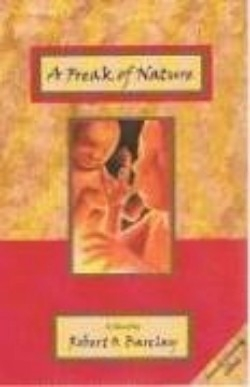A Freak of Nature
When faced with the idea of an inheritance most people hope that what is left for them by their ancestor is money or at least something of monetary value. That’s what Theo Ryan and his wife Kim the couple at the center of A Freak of Nature were hoping when they got word that Theo’s uncle left the contents of his safety deposit box to him.
At first the couple struggling to make ends meet and to learn how to love each other again after the death of their infant daughter are quite disappointed when the box leads them to an art dealer who has held a collection of journals some drawings and a disturbing bronze sculpture that no one would want to buy.
The collection belonged to Zachary Scott an artist who had some renown in the late 1800s. Theo randomly opens one of the journals and reads an account of the southern United States on the eve of the Civil War.
Theo begins to read the journals and as the story of Zachary and his love Gara unfolds Theo and Kim find themselves strangely influenced. The stories of Zachary and Gara and Theo and Kim mirror each other through the course of the book finally illustrating that a family’s legacy does not have to come from financial success.
The title of the book rather inappropriately refers to Zachary’s condition of having supernumerary limbs protruding from his body caused by a condition called chimerism. A twin was encapsulated into his body in the womb and that child remained small but visible throughout his life.
Despite the misstep with the title a few jarring footnotes to explain historical references and the fact that the book would have benefited from another read by a diligent copy editor this book is an entertaining read that provides a heartbreaking and stirring look into the world of the 1800s and Civil War America as well as the lives of a young couple struggling to connect in 1950s America. Readers will be swept along with the same enthusiasm that carried Theo and Kim through the pages of Zachary’s journals and will delight in the triumphs of both couples.
Readers who like historical fiction will enjoy this book. In this Barclay’s fourth novel he shows an ability to weave stories and lives together that makes this a quicker read than one would expect and will get readers thinking about history and the things that are left behind. Even though we live in a more modern world those who came before still have a lot to teach the people of today.
Reviewed by
Sarah White
Disclosure: This article is not an endorsement, but a review. The publisher of this book provided free copies of the book and paid a small fee to have their book reviewed by a professional reviewer. Foreword Reviews and Clarion Reviews make no guarantee that the publisher will receive a positive review. Foreword Magazine, Inc. is disclosing this in accordance with the Federal Trade Commission’s 16 CFR, Part 255.

